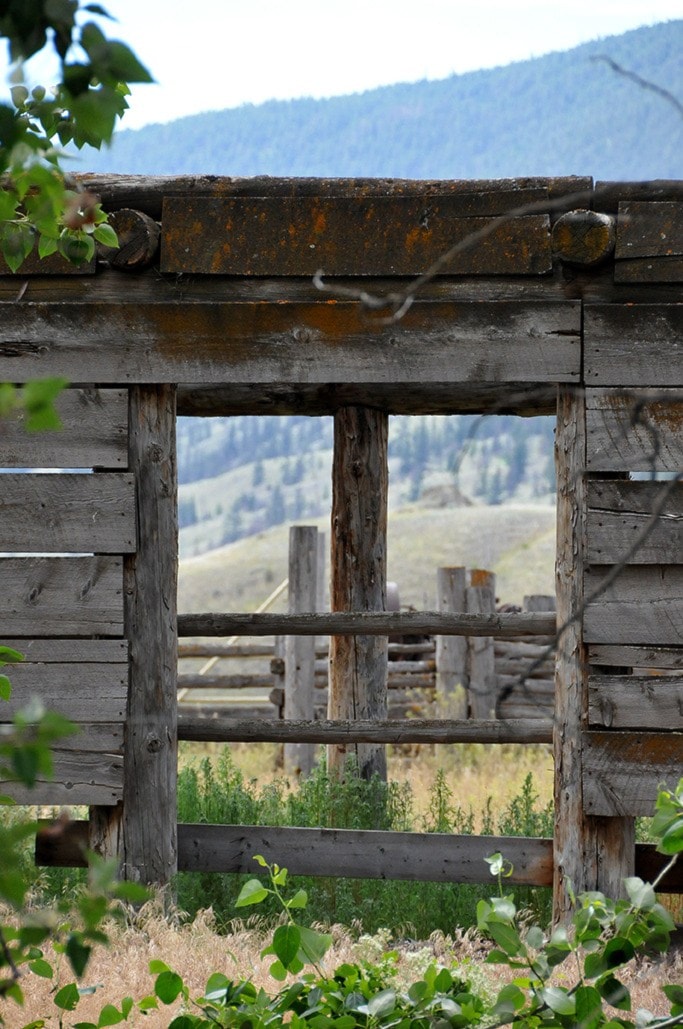by Esther Darlington MacDonald
This is the story of a diminutive Chinese widow who founded a ranch in the wilds of Upper Hat Creek in the early part of the 1900’s.
We do not usually associate the Chinese with ranching. Better known as farmers, Chinese farmed from the areas around Spences Bridge to as far as Walhachin. But “widow”, in an effort short of desperation, learned of the prime range land in the Upper Hat Creek belt bordered by the limestone wooded mountains, and decided to take her family into the isolated territory, miles away from the nearest towns of Ashcroft and Clinton.
The widow was Lee Yee. She was married to Kwan Yip when she was 14, born in Victoria, in 1875. After the death of her husband in Cache Creek, Lee had seven children to feed, cloth and shelter. And the store that she and her late husband had operated in Cache Creek had been a hard enough life. They had laboured for 26 years at the log store.
Lee grew huge quantities of potatoes and other vegetables which she traded to Kelly Douglas and Malkin’s for other goods. The barter system was alive and well apparently, in those early days before mechanized transport, when schools were one-roomed and made of logs and teachers came and went like the stage coaches and freight wagons along the Cariboo Road.
When Kwan Yip died in 1901, Lee Yee labored on at the store for some months after his death, but soon realized that she could not make enough. Her neighbour Joe Duck (aka Tong Sing), who owned a ranch in the upper reaches of Hat Creek, suggested to the widow that she would find good range land near his ranch. There was a homestead there, empty now. The land was there for the taking. Duck himself owned a store in Cache Creek and the two families knew each other well.
It is difficult to imagine the struggle Lee had to embark on an enterprise she had no knowledge of. Yet, life at Cache Creek, trying to eke out a living at the store, had become impossible. Still, she had grown sons, now well into their teens. Perhaps they had encouraged their mother, insisting that they could learn to ranch as their Cache Creek neighbours did. In fact, in later life, one of the sons acknowledged that neighbouring ranchers in Cache Creek had been kind and generous to the family. They undoubtedly offered advice to the young men and their mother. And Joe Duck as well, was there to advise them of how to get started with a herd. Soon, the lads became excellent cowboys, and expertly herded stock as far north as Hazelton in later years. There was always a market for good beef in the north.
Yes, life unfolded for widow Lee and her family, and we can only imagine the beginning, when with horse and wagon, all their worldly goods packed around them, Lee and her family left Cache Creek for the valley shared by wildlife and few other human beings. Though native Indian families had lived there centuries before, had fished and hunted and wintered in this wide stretch of range with its clumps of aspen and poplar, the vast empty vista must have spread before Lee Yee’s eyes like another foreign land into which she had once again to venture with little certainty that she could survive, let alone, thrive in it.
Into a rough homestead, five miles from the Duck ranch, the family began their new life. Industrious and determined to make a go of it, and, at the same time, desiring to see her children educated, Lee Yee became one of those unsung heroines that our early history is full of. She joins the countless women of the Cariboo whose lives filled with child bearing, all the domestic and farming and ranching chores that she shared with her husband. Many of those women died in child birth at an early age. Our graveyards are full of tombstones that testify to the hard lives those early women lived, often without benefit of medical help, and not even a midwife. Birth control was not an option. Many women, including my own grandmother, who had eight children in 12 years, was typical of the early 20th century life for most women.
Lee had nine children altogether. Seven by Kwan Yip, and two by Joe Duck. Four of the children, Ernie, Jack, Arthur and May, operated the ranch for some time. They ran 600 head of cattle, feeding them through the winter months, and not relying on the cattle to find their own feed. In February, when meat supplies in the Lower Mainland were running short, Lee’s sons found a willing market for their cattle.
In 1912, Lee became ill. Her son Arthur took her to Vancouver. She was diagnosed with tuberculosis. Lee died the following year. Arthur remained in Vancouver after his mother’s death. He cared and raised the two children born from Joe Duck whom had accompanied him from Hat Creek. Because he knew how important the children’s education was to his mother, Arthur worked in Vancouver to provide for them. Eventually, Ernie, Jack and May left the ranch at Upper Hat Creek, and the ranch was sold.
The Kwan spread as it was known, found a ready buyer in Henry Parke. Henry Parke and his wife Isabella raised their family there. Four generations of the Parke family have associated with the ranch. Henry Parke had immigrated from County Sligo in Ireland. He was the nephew of pioneer rancher, Philip Parke, founder of the Bonaparte Ranch.
Alan Parke eventually took over the Bonaparte Ranch at Cache Creek, and Gordon Parke ranched at Upper Hat Creek. Gordon acted as President of the B.C. Cattlemens’ Association for some time.
And to think it all began with one diminutive little Chinese widow in Upper Hat Creek, with the help of rancher Joe Duck and Lee Kwan’s capable sons.
